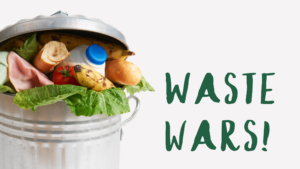Written by Kathryn Backholer and Adrian Cameron from the Global Obesity Centre and the Institute for Health Transformation at Deakin University.
If you have ever taken a child with you to the supermarket you will appreciate the challenges involved. For many parents food shopping feels like a never-ending fight against the appeal of brightly coloured unhealthy packaged foods and drinks, such as high sugar breakfast cereals, chocolates and soft drinks that are conveniently positioned at children’s eye level, and often in the most prominent spots in the store. Which inevitably leads to the difficult task of public negotiation!
As hard as you resist the demands, for many of us there are times when it’s all too hard and let’s face it, children can be loud!
If this is you, you’re not alone – an Australian study showed that almost two thirds of parents reported getting food requests from their children in the supermarket. 70% of parents said they agreed to buy at least one of the requested food items and almost 90% of these requests were for unhealthy foods or drinks [1].
With one quarter of Australian children now classified as above a healthy weight [2] and with unhealthy diets being the leading risk factor for chronic disease in Australia, it’s concerning that Australian supermarkets continue to promote unhealthy options.
Unhealthy processed food manufacturers and retailers in Australia allocate billions of dollars each and every year to marketing techniques that boost sales, including: Paying for price discounts (e.g half price specials, buy one get one free); making sure that their product are at prominent locations (like end of aisles and checkouts); buying extra shelf space (preferably at children’s eye level); ensuring that packaging is eye-catching; as well as offering in-store taste testings, giveaways and competitions. Which are all part of the “marketing mix”.
The food industry invests so much into these powerful marketing tactics because they know they work, especially when targeted towards young children.
Research consistently shows, unsurprisingly, that in-store marketing leads to increased sales [3] [4] [5] and that the impact is greater for unhealthy foods and drinks compared to healthier options. The vast majority of foods promoted with these techniques are also unhealthy [6], even though Australian supermarkets claim that they are increasingly trying to promote fruit and vegetables [7] [8].
Targeting children through in-store marketing techniques not only encourages relentless requests for unhealthy products (‘pester power’), it also primes children as future consumers. To use industry lingo, its building ‘cradle-to-grave’ brand and product loyalty.
The food industry claims that parents should take responsibility for what their children eat and that ‘common sense’ should prevail.
But brand marketing is so sophisticated and unrelenting that even very young children are now able to distinguish brand logos, colours, jingles and names, with some studies even suggesting that a child can identify brand logos with a high degree of accuracy by age three [9]. It’s clear that our world of hyper-marketed unhealthy food completely undermines parents’ efforts to feed their children healthy foods.
Can anything be done to support parents in the battle against unhealthy food marketing?
Well, food companies could be encouraged to be socially responsible and consider the health of their customers, but the hope of these brands self-regulating is very unlikely when their primary responsibility is to their shareholders who demand profit. Evidence suggests that without government regulation retailers and food manufacturers won’t make significant changes on their own [10].
There are currently no government policies that regulate marketing in Australian supermarkets [11]. But some countries are starting to realise that without them, rates of obesity and disease will only keep going up.
The UK Government recently introduced legislation to restrict “volume-based” price promotions (e.g buy-one-get-one-free deals) and prominent product locations both in-store (end of aisles, checkouts and in-store entrances) and online (homepage or checkout page) for foods that are high in fat, sugar and salt. The legislation is currently under public consultation, but it is expected the policy will go into effect in April 2022.
In Chile, cartoon mascots were banned from being used on packaging of unhealthy foods in 2016. Toys, competitions and other enticing paraphernalia are also banned.
Just like we’ve seen with soft drink and sugar taxes, when one brave government decides to introduce a health promoting policy, others are likely to follow.
As a nation we can continue to prop up the food industry’s deep pockets and cynical attempts to shift the blame of unhealthy diets to parents OR we can follow the lead of the UK and Chile and get to the source of the problem – the economic exploitation of children by industry.
So, next time you are deep in negotiation with a small child at the checkout, remember that governments can help by taking responsibility for the solution.
And if you would like to get involved in advocating government for change on this issues and other issues like this one, make sure to join Parents’ Voice’s network of parents.
[1] S. Campbell, E. James, F. Stacey, J. Bowman, K. Chapman & B. Kelly, A Mixed-method Examination of Food Marketing Directed Towards Children in Australian Supermarkets, Published: 2012, https://pubmed.ncbi.nlm.nih.gov/23154998/, Accessed 22/02/2021.
[2] Australian Institute of Health and Welfare, Overweight & Obesity, Published: 2020, https://www.aihw.gov.au/reports-data/behaviours-risk-factors/overweight-obesity/overview, Accessed 22/02/2021
[3] A. Hecht, C. Perez, M. Polascek, A. Thorndike, R Franckle & A. Moran, Influence of Food and Beverage Companies on Retailer Marketing Strategies and Consumer Behaviour, Published: 2020, https://www.mdpi.com/1660-4601/17/20/7381/pdf, Accessed 22/02/2021.
[4] P. Tan, A. Corsi, J. Cohen, A. Sharp, L. Lockshin, W. Caruso, S. Bogomolova, Assessing the sales effectiveness of differently located endcaps in a supermarket, Published: 2018, https://www.sciencedirect.com/science/article/abs/pii/S0969698917307257, Accessed 22/02/2021.
[5] R. Nakamura, R. Pechey, M. Suhrcke, S. Jebb & T. Marteau, Sales Impact of Displaying Alcoholic and Non-alcoholic Beverages in End-of-isle Locations: An Observational Study, Published: 2014, https://pubmed.ncbi.nlm.nih.gov/24632050/, Accessed 22/02/2021.
[6] G.Sacks, S. Schultz, L. Grigsby-Duffy, E. Robinson, L. Orellana, J. Marshall & AJ. Cameron, Inside our supermarkets: Assessment of the healthiness of Australian supermarkets, Published: 2020, https://aa4ed193-10bb-4e34-8c1c-65e97daef1a8.filesusr.com/ugd/2e3337_691f2a812ca742b3a8599f364bbd2b69.pdf, Accessed 22/02/2021.
[7] Food & Beverage, Coles to Make Healthier Living Easier and More Affordable, Published: 2020, https://www.foodmag.com.au/coles-to-make-healthier-living-easier-and-more-affordable/, Accessed 22/02/2021.
[8] Woolworths Group, Making Healthier Eating Easier, Published: 2020, https://www.woolworthsgroup.com.au/page/community-and-responsibility/group-responsibility/environment/inspiring-healthy-choices, Accessed 22/02/2021.
[9] P. Fischer, M. Schwartz, J. Richards Jr, A. Goldstein & T. Rojas, Brand Logo Recognition By Children Aged 3 To 6 Years. Mickey Mouse and Old Joe the Camel, Published: 1991, https://pubmed.ncbi.nlm.nih.gov/1956101/, Accessed 22/02/2021.
[10] W. Watson, V. Lau, L. Wellard, C. Hughes & K. Chapman, Advertising To Children Initiatives Have Not Reduced Unhealthy Food Advertising On Australian Television, Published: 2017, https://academic.oup.com/jpubhealth/article/39/4/787/2966185, Accessed 22/02/2021.
[11] Obesity Policy Coalition, Food Policy Index, Published: unknown, https://www.opc.org.au/what-we-do/food-policy-index, Accessed 22/02/2021




